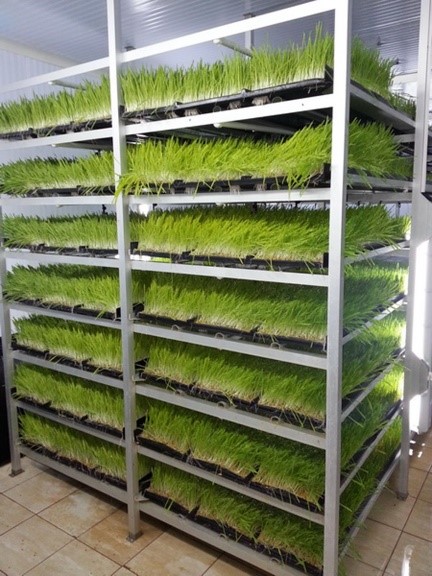
The project was developed to meet the green fodder needs of cattle, small ruminants, or poultry by using a fresh feed production system within a climate-controlled chamber. With an 18m² facility, it aims to provide green fodder in regions without pastures and produce highly nutritious green feed for animals.
Project Problem Area
The project aims to provide an economical and efficient solution for meeting the green fodder needs of animals in regions lacking natural pastures.
Social, Economic, and Environmental Impacts of the Problem
Social Impact:
Increasing agricultural productivity can improve social welfare by providing livestock owners with higher income and access to more nutritious feed.Economic Impact:
In regions without pastures, reducing feed costs can bring significant economic benefits to livestock breeders.Environmental Impact:
Producing green fodder locally can reduce the need for long-distance transportation of animal feed, thereby lowering the carbon footprint.
Our Solution Strategy as the Agricultural Solutions Center
Ensuring the rapid and efficient growth of green fodder using a climate-controlled fresh feed production system and meeting daily feed needs.
Providing technical support and training to farmers on the use and maintenance of the facility.
Uniqueness of the Solution Strategy
The fresh feed production system in a climate-controlled chamber offers an eco-friendly solution for efficient green fodder production in limited spaces and regions without pastures.
It enables the production of highly nutritious green fodder, improving animal welfare.
SDG Impacts of the Project
Zero Hunger, Food Security, and Improved Nutrition
By ensuring better nutrition and sufficient feed for animals, the project contributes to combating hunger.Sustainable Cities and Communities
Economical and efficient feed production can enhance the quality of life in rural communities.
Project Goals
The project aims to meet the daily nutritional needs of animals in regions without pastures by using a fresh feed production system within a climate-controlled environment.
Project Activities and Promotion
Designing and prototyping the fresh feed production system in a climate-controlled chamber.
Conducting research and tests to monitor the system’s impact and efficiency in animal feeding.
Promoting the project at agricultural and livestock fairs and events.
Sharing success stories and benefits through media channels.
Sustainability Goals
Constructing the facility with durable and long-lasting materials to support sustainability objectives.
Enhancing project effectiveness through farmer training and technical support.
Business Model
The business model focuses on the sale and service provision of climate-controlled fresh feed production systems.
